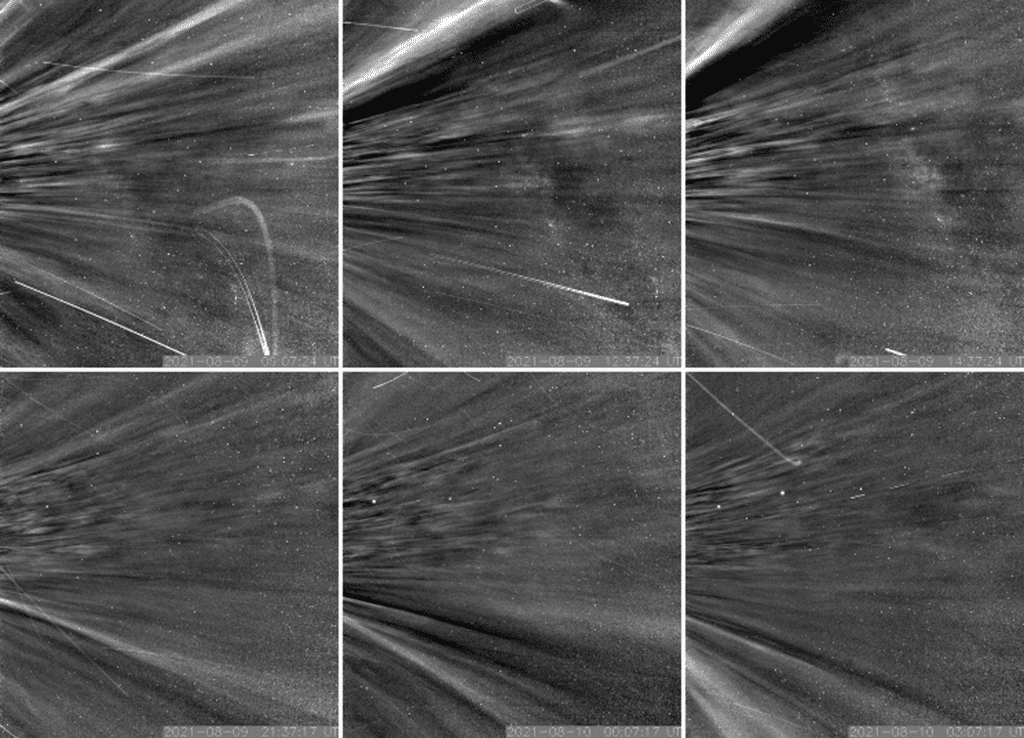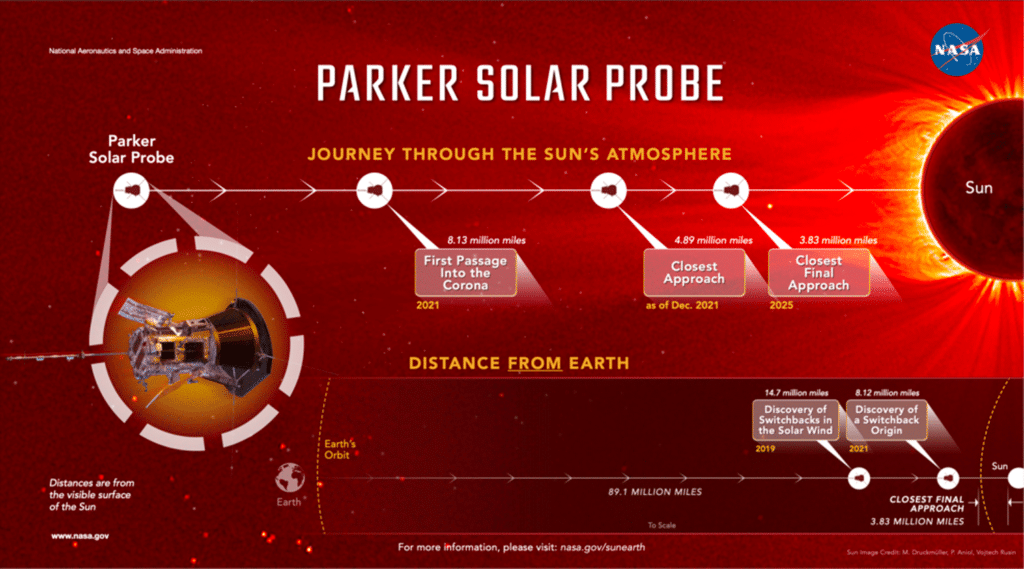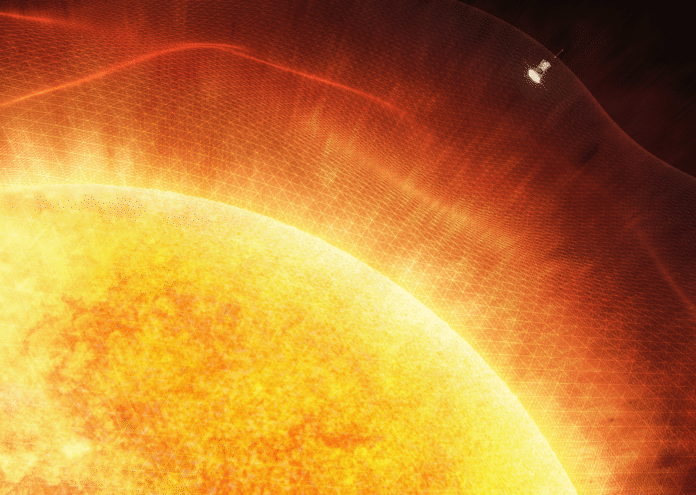Launched in 2018, the Parker Solar Probe aims to unravel the mysteries of the Sun by traveling closer to it. After three years of launching, Parker has finally arrived in the solar atmosphere.
Parker Solar Probe has flown through the Sun’s upper atmosphere for the first time in history – the corona. The probe sampled particles and magnetic fields there.
Thomas Zurbuchen, the associate administrator for the Science Mission Directorate at NASA Headquarters in Washington, said, “Parker Solar Probe “touching the Sun” is a monumental moment for solar science and a truly remarkable feat. Not only does this milestone provide us with deeper insights into our Sun’s evolution and its impacts on our solar system, but everything we learn about our star also teaches us more about stars in the rest of the universe.”
Sun does not have a solid surface. Instead, it has a superheated atmosphere. The solar material in this atmosphere is bound to the Sun by gravity and magnetic forces. Rising heat and pressure push that material away from the Sun, it arrives where gravity and magnetic fields are too weak to contain it.
That point, known as the Alfvén critical surface, marks the end of the solar atmosphere and the beginning of the solar wind. Until now, scientists were not sure exactly where the Alfvén critical surface resides.

Based on remote images of the corona, scientists estimated it resides between 10 to 20 solar radii from the surface of the Sun – 4.3 to 8.6 million miles.
During its eighth flyby of the Sun, Parker Solar Probe encountered the specific magnetic and particle conditions at 18.8 solar radii (around 8.1 million miles) above the solar surface. This suggested that the probe had crossed the Alfvén critical surface.
Justin Kasper, lead author on a new paper about the milestone published in Physical Review Letters and deputy chief technology officer at BWX Technologies, Inc., said, “We were fully expecting that, sooner or later, we would encounter the corona for at least a short duration of time. We were fully expecting that, sooner or later, we would encounter the corona for at least a short duration of time.”
The Alfvén critical surface isn’t shaped like a smooth ball. It has spikes and valleys that wrinkle the surface. At some point, these protrusions join solar activity coming from the surface. Discovering that point helps scientists learn how events on the Sun affect the atmosphere and solar wind.
At one point during the flyby, the probe dipped to just beneath 15 solar radii (around 6.5 million miles) from the Sun’s surface. It passes through the feature in the corona called a pseudostreamer. It was like flying into the eye of a storm.
Inside the pseudostreamer, the conditions quieted, particles slowed, and a number of switchbacks dropped – a dramatic change from the busy barrage of particles the spacecraft usually encounters in the solar wind.
That was the first time that the probe found itself in a region where the magnetic fields were strong enough to dominate the movement of particles there. These conditions were the definitive proof the spacecraft had passed the Alfvén critical surface.
During recent encounters, Parker Solar Probe pinpointed switchbacks, the origin of zig-zag-shaped structures in the solar wind. Detailed observation shows that the switchbacks originate from the visible surface of the Sun – the photosphere.
These switchbacks are common in the solar wind. However, it puzzled scientists: Where were they coming from? Were they forged at the surface of the Sun or shaped by some process kinking magnetic fields in the solar atmosphere?

The new study confirms one origin point is near the solar surface.
The data from Parker Solar Probe offered a clue. Data showed switchbacks occur in patches. They have a higher percentage of helium – known to come from the photosphere – than other elements. When scientists further narrowed down the switchbacks’ origins, they found that the patches aligned with magnetic funnels. These magnetic funnels emerge from the photosphere between convection cell structures called supergranules.
According to scientists, besides being the birthplace of the switchbacks, these magnetic funnels might be where one component of the solar wind originates.
Stuart Bale, professor at the University of California, Berkeley, and lead author on the new switchbacks paper, said, “The structure of the regions with switchbacks matches up with a small magnetic funnel structure at the base of the corona. This is what we expect from some theories, and this pinpoints a source for the solar wind itself.”
Determining where and how the components of the fast solar wind emerge, and if they are linked to switchbacks, could help scientists unravel a solar mystery: how the corona is heated to millions of degrees, far hotter than the solar surface below?
As the problem gets close to the Sun, unraveling even more clues about switchbacks and other solar phenomena is expected.
Joseph Smith, Parker program executive at NASA Headquarters, said, “It’s fascinating to see our advanced technologies succeed in taking Parker Solar Probe closer to the Sun than we’ve ever been and to be able to return such amazing science. We look forward to seeing what else the mission discovers as it ventures even closer in the coming years.”
Journal Reference:
- J. C. Kasper et al. Parker Solar Probe Enters the Magnetically Dominated Solar Corona. DOI: 10.1103/PhysRevLett.127.255101
